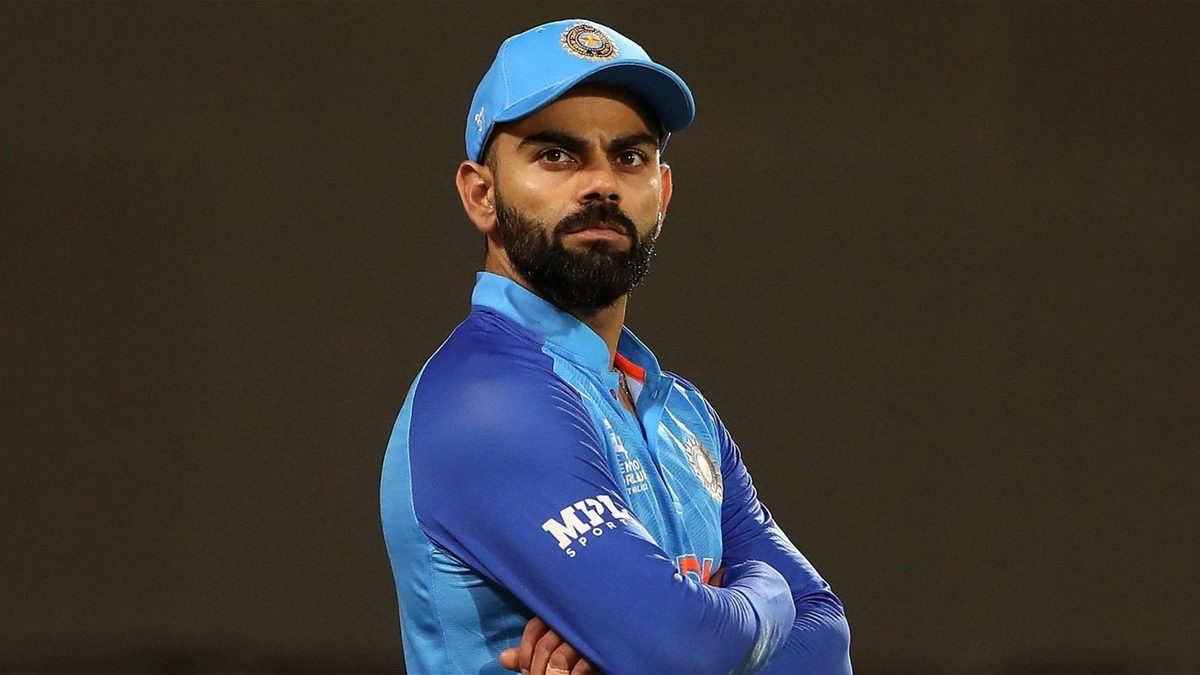
Virat Kohli was not named in Wisden’s 2022 T20 World Cup team of the tournament. Ben Gardner explains why.
The first thing to say is, this was very, very close. After last year’s T20 World Cup, a similar explainer was required to explain the ‘outrageous snub’ of not picking Babar Azam in that edition’s team of the tournament. But that was actually not that tough a decision, with Babar playing one excellent knock, against India, but otherwise scoring heavily – and not all that quickly – against the competition’s weaker teams.
This time, Kohli was right on the verge of selection for Wisden’s team of the tournament. Our editorial team was split almost right down the middle, and none of those on either side of the debate felt it would be a disgrace if he were or weren’t included. Had there been a 12th man, it would almost certainly have been Kohli.
For some, however, he should be a shoo-in. He was the leading run-scorer in the tournament. His strike rate was a far-from-sluggish 136. And he kickstarted India’s campaign with what was instantly hailed as one of the great T20 innings, including one of the great cricket strokes.
However, setting that aside, he played two handy – but not out of the ordinary – knocks against Netherlands and Bangladesh, and in the semi-final, in which a total just below 170 proved to be far too little, his 40-ball 50 surely cost India at some level. Kohli still had a very good competition, but there’s a reason why he didn’t pick up his third official Player of the Tournament gong.
He was edged out of the XI by Ben Stokes – Kohli was never going to get past Suryakumar Yadav, and No.5 would have been too low for him, even in a theoretical combined XI. To look at the raw numbers, there’s no comparison. Kohli averaged 98.66 and struck at 136. Stokes averaged 36.66 and struck at 106.
But break it down innings by innings, and the argument for Stokes improves. He had three failures to kick off the competition, making 16 off 19 across his first three games, but he also played two innings that were crucial to England’s hopes – they just weren’t typical T20 innings. England collapsed from 75-0 to 129-6 chasing 142 against Sri Lanka. Had it not been for Stokes’ unbeaten 42, they may well have lost that game, and been knocked out of the tournament. He ran hard, scoring at a run a ball off his non-boundary balls. It was an excellent knock to marshal a low, stuttering chase, and it didn’t need to come at a high strike rate.
His knock in the final is more debatable. He struggled to rotate the strike with the same success, scoring only 26 off his 43 non-boundary balls. Even with Stokes at the crease, the rate did threaten to get out of hand. When the opportunity of a release presented itself, he took it, hitting Iftikhar Ahmed for 10 off two to cap off his impromptu five-ball ‘set’. But had Shaheen Shah Afridi not been injured, he would not have had a part-timer to target. England went from needing 62 off 62 to 41 off 29 when Shaheen walked off. Stokes pulled England over the line in a clutch moment, and chose to conserve his wicket rather than get ahead of the game. It paid off, but on another day, it might not have.
Still, Stokes played one excellent innings and one good innings. His knock against Ireland was detrimental to England, but so was Kohli’s against England for India. The class of Kohli’s Pakistan knock and his two group stage half-centuries means that, were you picking a pure batter, his World Cup was better than Stokes’.
Where Stokes edges ahead is with the ball. Before this World Cup, his last four balls in a global T20 tournament had all gone for six – you don’t need reminding of the occasion. Pushed up into the top four, he was expected to only play a peripheral part as a bowler in this tournament. Instead, with Reece Topley and then Mark Wood ruled out, he became crucial as an opening bowler who could fill in in other parts of the innings. He ended the competition as England’s third most economical regular bowler, more miserly than both Mark Wood and Chris Woakes; his final tournament economy rate was less than seven runs per over. But crucially, he gave England vital flexibility elsewhere. Only Adil Rashid was required to bowl his full quota in every game. Chris Woakes only needed to bowl all four twice.
It was very close, but Stokes played one very good innings with the bat, saw England home in the final and was important with the ball. That just edges him ahead of Kohli’s one world-class innings, and two decent half-centuries.







